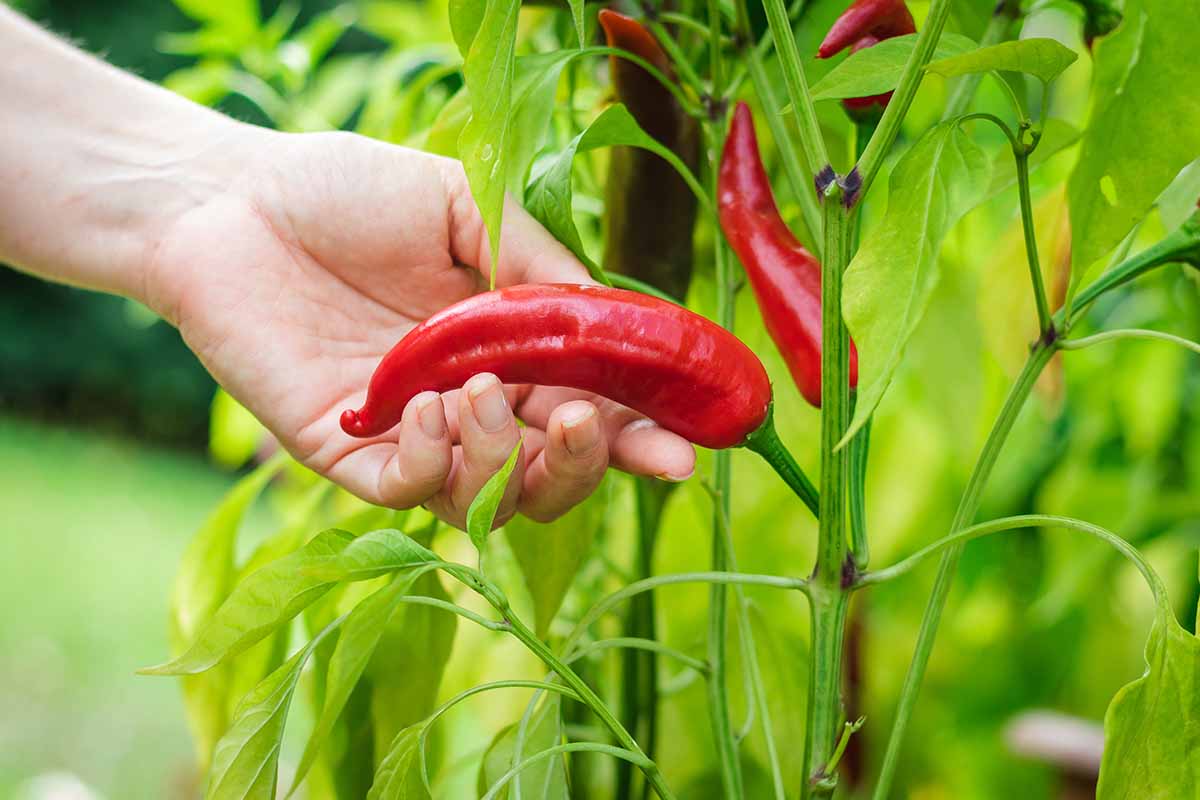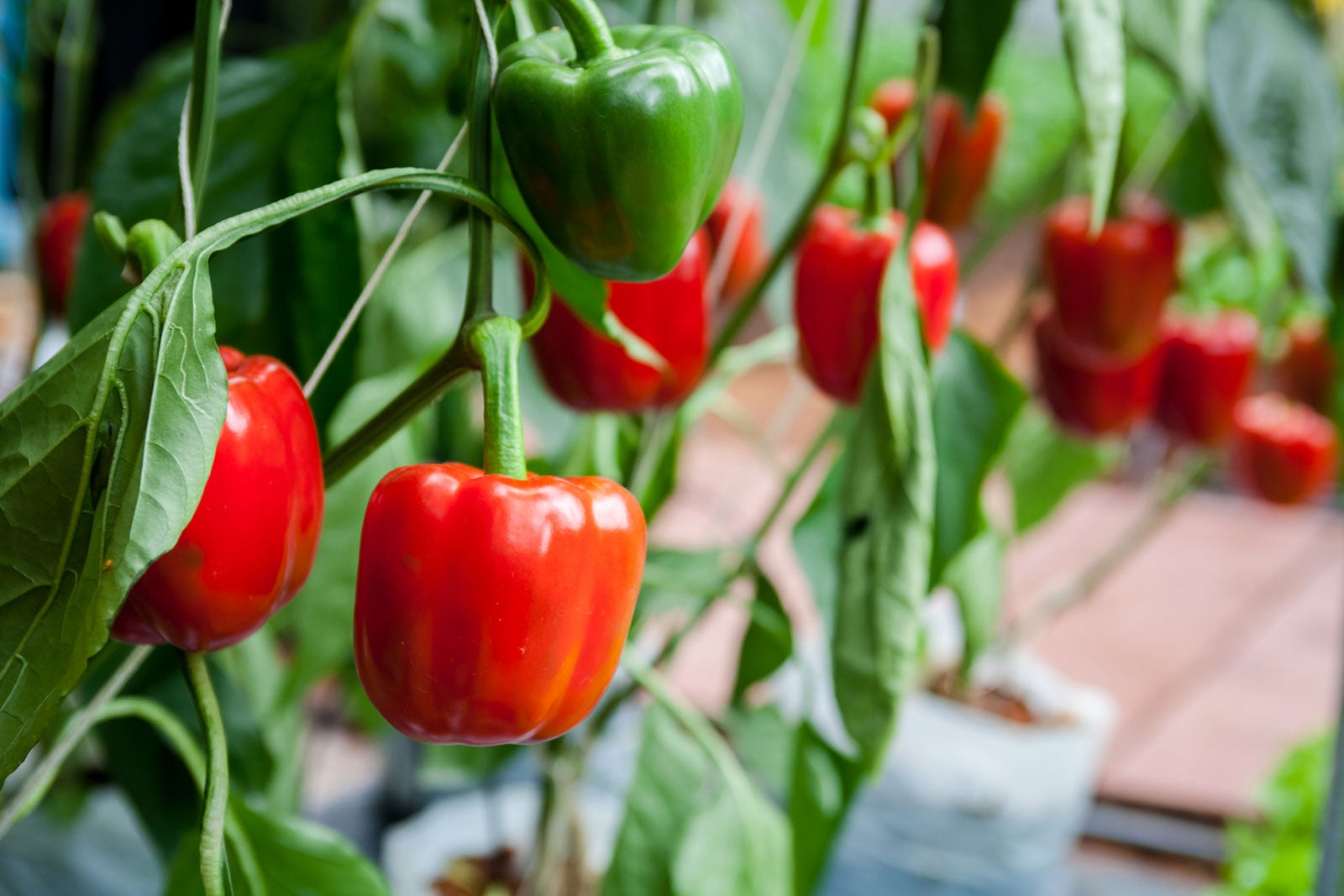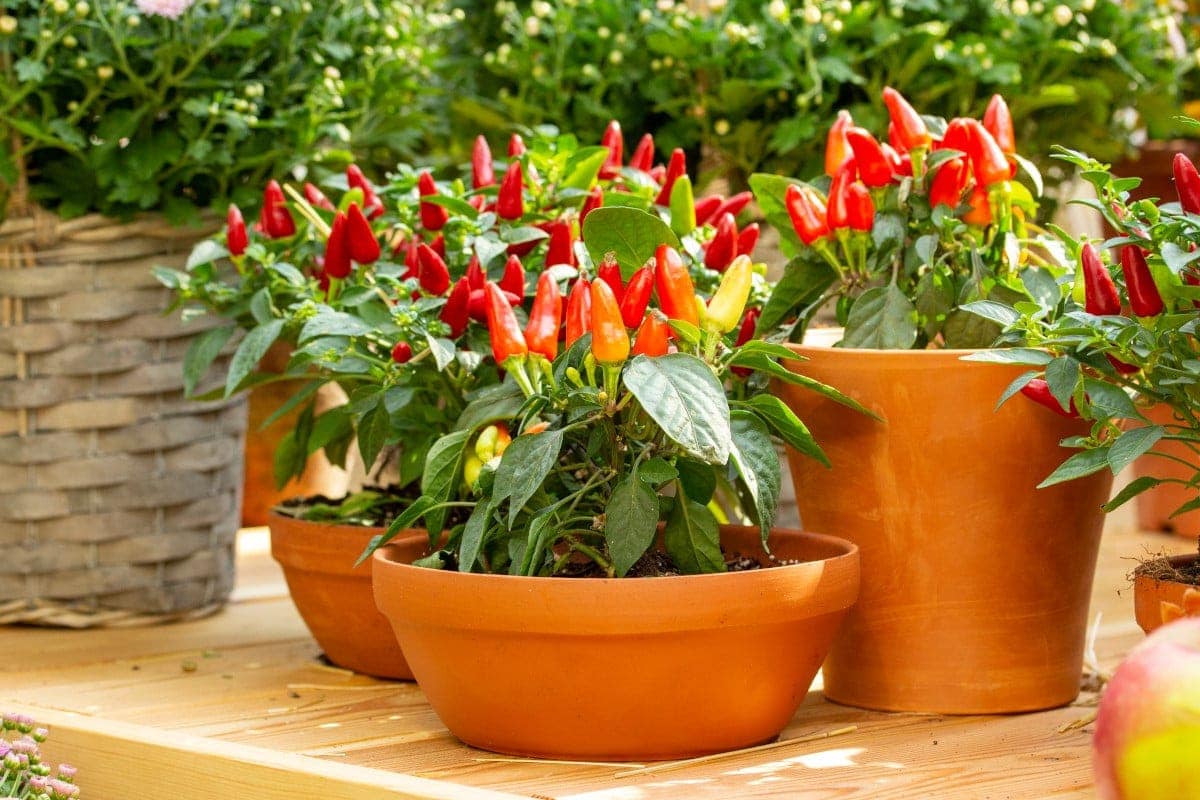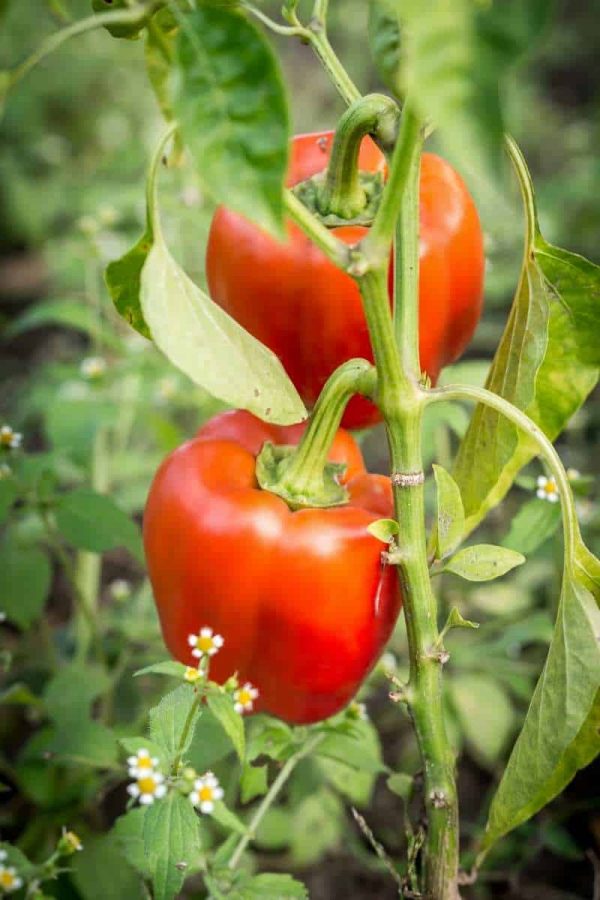Choosing the Right Variety: Selecting the Best Red Pepper Seeds
When it comes to growing red peppers, selecting the right variety is crucial for a successful harvest. With numerous types of red pepper seeds available, it’s essential to choose a variety that suits your climate and desired level of heat. Sweet red peppers, such as bell peppers, are perfect for snacking and adding crunch to salads, while hot red peppers, like cayenne or habanero, add a spicy kick to dishes.
For gardeners in cooler climates, look for varieties that mature quickly, such as ‘Early Jalapeño’ or ‘Red Cherry Bomb’. These peppers will produce fruit in as little as 60 days, allowing you to enjoy a bountiful harvest before the first frost. In warmer climates, consider varieties like ‘California Wonder’ or ‘Sweet Cherry’, which thrive in temperatures above 65°F (18°C).
When selecting red pepper seeds, also consider factors like disease resistance, yield, and plant size. Some varieties, like ‘Better Belle’, are bred to be compact and produce high yields, making them perfect for container gardens or small spaces. Others, like ‘Cubanelle’, are resistant to tobacco mosaic virus and bacterial leaf spot, reducing the risk of disease in your garden.
By choosing the right variety of red pepper seeds, you’ll be well on your way to growing delicious and healthy peppers. Whether you’re a seasoned gardener or just starting out, selecting the perfect variety will ensure a successful harvest and make the process of growing red peppers a rewarding experience.
Preparing the Soil: Creating an Ideal Environment for Red Peppers
Before sowing red pepper seeds, it’s essential to prepare the soil to create an ideal environment for growth. Red peppers require well-draining, fertile soil with a pH between 6.0 and 6.8. To achieve this, start by testing your soil to determine its pH level and nutrient content.
Based on the test results, add organic matter such as compost or well-rotted manure to improve soil structure and fertility. This will help to increase the soil’s water-holding capacity, reduce soil compaction, and provide essential nutrients for healthy growth.
In addition to organic matter, consider adding balanced fertilizers to provide red pepper plants with the necessary nutrients for growth. A fertilizer with a balanced NPK ratio (e.g., 10-10-10) will provide equal amounts of nitrogen, phosphorus, and potassium, promoting healthy growth and fruit production.
When preparing the soil, also consider the importance of drainage. Red peppers don’t like wet feet, so ensure the soil drains well to prevent waterlogged soil conditions. If necessary, add perlite or vermiculite to improve soil drainage and aeration.
By preparing the soil correctly, you’ll create an ideal environment for your red pepper plants to thrive. This will help to promote healthy growth, increase fruit production, and reduce the risk of disease and pests. When learning how to grow red peppers, soil preparation is a critical step that should not be overlooked.
How to Sow Red Pepper Seeds: A Beginner’s Guide
Sowing red pepper seeds is a straightforward process that requires attention to detail. To ensure optimal germination and growth, follow these steps:
Start by filling a seed tray or small pots with a good quality seed starting mix. Moisten the mix with water, but make sure it’s not too wet or dry. Sow the red pepper seeds about ¼ inch deep and 1-2 inches apart. Cover the seeds with a thin layer of the seed starting mix.
Water the seeds gently but thoroughly. Make sure the soil is consistently moist during the germination period, which typically takes 7-10 days. Keep the soil at a temperature of around 75-85°F (24-29°C) to promote germination.
Once the seeds have germinated, provide them with sufficient light. Red pepper seedlings require at least 12 hours of light per day. If you’re starting the seeds indoors, use grow lights to supplement natural light.
As the seedlings grow, transplant them into larger pots or directly into the garden. Harden off the seedlings by gradually exposing them to outdoor conditions over the course of 7-10 days. This will help prevent shock and ensure a smooth transition to outdoor growth.
When learning how to grow red peppers, it’s essential to sow the seeds at the right time. In most regions, the ideal time to sow red pepper seeds is 8-10 weeks before the last frost date. This allows the seedlings to mature and produce fruit during the warmest months of the year.
Supporting Your Red Pepper Plants: Using Cages and Trellises
As red pepper plants grow, they need support to maintain their shape and promote healthy growth. Providing support also helps to prevent the plants from toppling over in the wind, which can damage the fruit and reduce yields.
There are several types of cages and trellises available for supporting red pepper plants. Tomato cages are a popular option, as they are sturdy and easy to set up. Simply place the cage over the plant and tie the stems to the cage using twine or clips.
Trellises are another option for supporting red pepper plants. These can be made from a variety of materials, including wood, metal, or plastic. Look for a trellis that is at least 6 feet tall to provide adequate support for the plants.
When using cages or trellises, make sure to provide support for the plants as they grow. Tie the stems to the cage or trellis using twine or clips, and trim back any weak or spindly growth. This will help to promote healthy growth and encourage the plants to produce more fruit.
By providing support for your red pepper plants, you can help to promote healthy growth and increase yields. This is an important step in learning how to grow red peppers, as it can make a big difference in the success of your crop.
In addition to cages and trellises, you can also use other types of support, such as stakes or clips. These can be used to provide additional support for the plants, especially if they are top-heavy with fruit.
Watering and Mulching: Tips for Healthy Red Pepper Plants
Proper watering and mulching techniques are crucial for healthy red pepper plants. Red peppers require consistent moisture, especially when they’re producing fruit. However, overwatering can be detrimental to the plants, leading to root rot and other problems.
To avoid overwatering, check the soil regularly to ensure it’s not too wet or dry. Water the plants when the top inch of soil feels dry to the touch. Avoid getting water on the leaves or crown of the plant, as this can lead to disease.
Mulching is also an essential part of red pepper care. Mulch helps to retain moisture in the soil, suppress weeds, and regulate soil temperature. Use a 2-3 inch layer of organic mulch, such as straw or bark chips, around the plants. Keep the mulch a few inches away from the plant stems to prevent moisture from accumulating and causing rot.
In addition to mulching, consider using drip irrigation or soaker hoses to deliver water directly to the roots of the plants. This can help to reduce evaporation and runoff, ensuring that the plants receive the water they need.
When learning how to grow red peppers, it’s essential to understand the importance of proper watering and mulching techniques. By following these tips, you can help to promote healthy growth and maximize your yields.
Some other tips to keep in mind when watering and mulching red pepper plants include:
- Avoid watering during the hottest part of the day to prevent scorching the leaves.
- Use a moisture meter to check the soil moisture levels.
- Keep the mulch layer consistent to prevent weeds from growing.
Pest and Disease Management: Common Issues and Solutions
Red pepper plants are susceptible to various pests and diseases that can impact their growth and productivity. To minimize the risk of infestation and infection, it’s essential to implement effective pest and disease management strategies.
Aphids, whiteflies, and spider mites are common pests that can infest red pepper plants. These pests can cause damage to the leaves, stems, and fruit, and can also transmit diseases. To control aphids and whiteflies, use neem oil or insecticidal soap. For spider mites, use a miticide or introduce natural predators like ladybugs or lacewings.
Powdery mildew and tobacco mosaic virus are common diseases that can affect red pepper plants. Powdery mildew is a fungal disease that causes a white, powdery coating to form on the leaves. Tobacco mosaic virus is a viral disease that causes yellowing or stunting of the leaves. To prevent powdery mildew, ensure good air circulation and water the plants at the base to avoid getting water on the leaves. To prevent tobacco mosaic virus, use resistant varieties and avoid touching the plants excessively.
Other common issues that can affect red pepper plants include root rot, leaf spot, and blossom end rot. Root rot is a fungal disease that causes the roots to rot, leading to plant death. Leaf spot is a bacterial disease that causes small, circular spots to form on the leaves. Blossom end rot is a physiological disorder that causes the fruit to rot at the blossom end. To prevent these issues, ensure good soil drainage, avoid overwatering, and provide adequate calcium and magnesium.
By implementing effective pest and disease management strategies, you can help to promote healthy growth and maximize your yields when learning how to grow red peppers.
Some other tips to keep in mind when managing pests and diseases include:
- Monitor your plants regularly for signs of infestation or infection.
- Use physical barriers like fine-mesh screens to prevent pests from reaching the plants.
- Practice good sanitation and hygiene to prevent the spread of diseases.
Fertilizing Your Red Pepper Plants: A Balanced Approach
Fertilizing your red pepper plants is essential for promoting healthy growth and maximizing yields. A balanced fertilizer provides the necessary nutrients for optimal growth, including nitrogen, phosphorus, and potassium.
When learning how to grow red peppers, it’s essential to understand the importance of fertilizing at different stages of growth. During the seedling stage, use a starter fertilizer with a balanced NPK ratio (e.g., 10-10-10). This will provide the necessary nutrients for seedling growth and development.
As the plants grow, switch to a fertilizer with a slightly higher phosphorus content (e.g., 15-30-15). This will promote fruiting and flowering. During the fruiting stage, use a fertilizer with a higher potassium content (e.g., 10-10-20). This will help to promote fruit growth and development.
It’s also essential to consider the soil type and pH when fertilizing your red pepper plants. For example, if your soil is acidic, you may need to add lime to raise the pH. If your soil is alkaline, you may need to add sulfur to lower the pH.
Some other tips to keep in mind when fertilizing your red pepper plants include:
- Avoid overfertilizing, as this can damage the plants and lead to nutrient imbalances.
- Use organic fertilizers whenever possible, as these are more environmentally friendly and can promote healthier soil biota.
- Consider using foliar sprays or side-dressing to provide additional nutrients to the plants.
By following these tips and using a balanced fertilizer, you can help to promote healthy growth and maximize your yields when growing red peppers.
Harvesting Your Red Peppers: Timing and Techniques
Harvesting your red peppers at the right time is crucial to ensure optimal flavor, texture, and color. The timing of the harvest depends on the variety of red pepper you are growing, as well as the desired level of ripeness.
For sweet red peppers, wait until they are fully ripe and have turned from green to their final color. This can take anywhere from 70 to 90 days after sowing, depending on the variety. For hot red peppers, wait until they are firm and have reached their full color.
When harvesting your red peppers, use scissors or a sharp knife to cut the fruit from the plant. Avoid pulling or twisting the fruit, as this can damage the plant and reduce future yields.
Some other tips to keep in mind when harvesting your red peppers include:
- Harvest your red peppers in the morning, when the plants are at their highest water content.
- Use a container or bag to collect the harvested peppers, to prevent them from getting damaged or bruised.
- Consider harvesting your red peppers in stages, to encourage the plant to produce more fruit.
By following these tips and techniques, you can enjoy a bountiful harvest of delicious and nutritious red peppers. Remember to always handle your red peppers with care, and to store them properly to maintain their flavor and texture.
With these steps and tips, you now have the knowledge and skills to grow your own delicious red peppers. Whether you’re a seasoned gardener or just starting out, growing red peppers can be a fun and rewarding experience. So why not give it a try and see the results for yourself?









